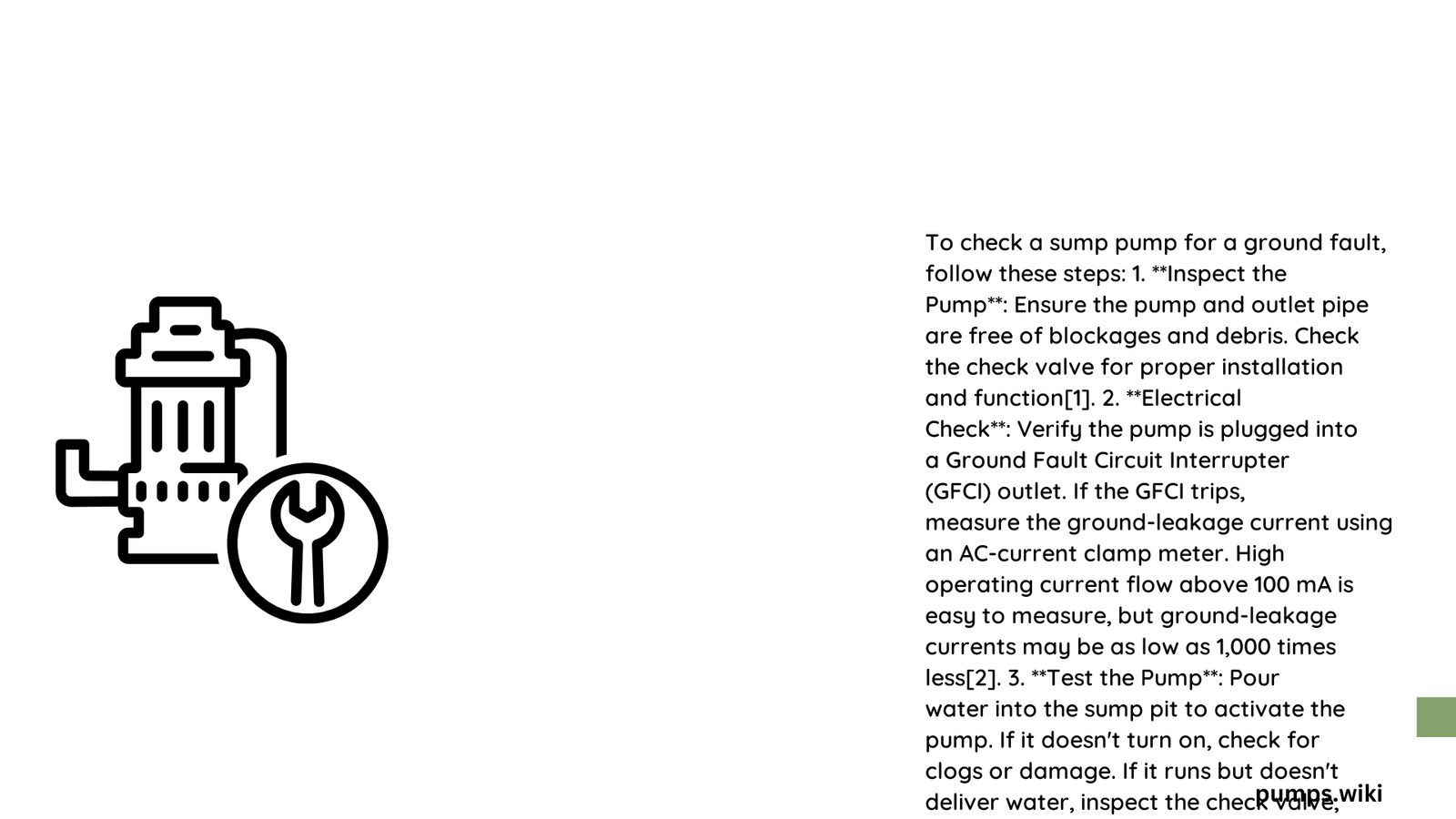Sump pump ground fault detection is critical for preventing electrical hazards and ensuring reliable water removal. Homeowners must understand the complex electrical dynamics that can compromise their basement drainage system’s safety. Ground faults can lead to potential electrical shock, equipment failure, and significant property damage if not promptly identified and resolved.
What Causes Sump Pump Ground Fault?
Ground faults in sump pumps occur when electrical current unexpectedly travels outside its intended circuit path, potentially creating dangerous situations. Several factors contribute to these electrical anomalies:
Primary Ground Fault Triggers
- Water exposure in electrical components
- Damaged power cord insulation
- Aging electrical infrastructure
- Improper grounding mechanisms
- Moisture infiltration in pump mechanisms
How to Detect Ground Fault in Sump Pump?

Diagnostic Tools Required
| Tool | Purpose | Estimated Cost |
|---|---|---|
| AC Current Clamp Meter | Measure electrical current | $50-$200 |
| Receptacle Tester | Check outlet functionality | $10-$50 |
| Multimeter | Verify voltage and continuity | $30-$100 |
Step-by-Step Ground Fault Verification
- Visual Inspection
- Examine power cord for visible damage
- Check for corrosion or moisture around electrical connections
-
Inspect GFCI outlet condition
-
Electrical Testing
- Verify GFCI outlet functionality
- Measure load current using clamp meter
- Test ground leakage current
- Confirm voltage stability
What Are Acceptable Ground Fault Thresholds?
Electrical Safety Parameters
- Acceptable ground leakage: 4-6 mA
- Maximum safe current threshold: 30 mA RMS
- Recommended testing frequency: Monthly
Why Professional Evaluation Matters?
Complex Diagnostic Requirements
- Advanced measurement techniques
- Specialized electrical knowledge
- Comprehensive system assessment
- Potential hazard identification
Cost Considerations for Ground Fault Resolution
Potential Expenses
- Basic diagnostic test: $100-$300
- Minor electrical repairs: $50-$200
- Complete sump pump replacement: $200-$1,000
Preventive Maintenance Strategies
Recommended Actions
- Regular visual inspections
- Annual professional evaluation
- Immediate repair of damaged components
- Maintain dry surrounding environment
- Use waterproof electrical connections
Warning Signs of Potential Ground Fault
Critical Indicators
- Frequent GFCI outlet tripping
- Intermittent pump operation
- Burning electrical smell
- Visible cord or outlet damage
- Unexplained electrical interruptions
Technical Recommendations
Best Practices
- Install dedicated GFCI circuit
- Use waterproof electrical components
- Implement moisture barriers
- Ensure proper grounding techniques
- Select high-quality, corrosion-resistant equipment
When to Seek Professional Help?
Expert Intervention Scenarios
- Persistent ground fault issues
- Complex electrical system
- Limited technical expertise
- High-risk basement environments
- Older home infrastructure
Conclusion
Checking sump pump ground fault requires systematic approach, technical understanding, and proactive maintenance. Homeowners must prioritize electrical safety to prevent potential catastrophic failures.
